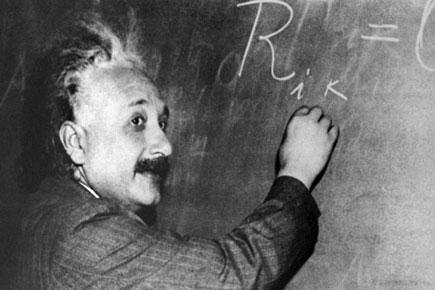Scientists made an extraordinary announcement today - for the first time, ripples known as gravitational waves have been observed in the fabric of spacetime

Scientists made an extraordinary announcement today - for the first time, ripples known as gravitational waves have been observed in the fabric of spacetime. The discovery of gravitational waves confirms a major prediction of Albert Einstein's 1915 general theory of relativity, and opens an unprecedented new window onto the cosmos.
ADVERTISEMENT
 Albert Einstein
Albert Einstein
"With this discovery, we humans are embarking on a marvelous new quest: the quest to explore the warped side of the universe," said LIGO co-founder Kip Thorne.
Also Read: Breakthrough: Scientists find gravitational waves Einstein predicted a century ago
Incredible moment scientists announce they've detected gravitational waves. However, the question on everybody's lips was - does this mean time travel is now possible? Sadly, the answer is no. "It brings us a much deeper understanding of how warp spacetime behaves when it is extremely warped," says Thorne. "I don't think it's going to bring us any closer to being able to do time travel. I wish it would, but that's a different direction."
The gravitational waves were detected by scientists at the Advanced Laser Interferometer Gravitational Wave Observatory (LIGO) on September 14, 2015. They said the gravitational waves were produced during the final fraction of a second of the merger of two black holes to produce a single, more massive spinning black hole. This collision of two black holes had been predicted but never observed. This is what two black holes colliding would look like.
Based on the observed signals, LIGO scientists estimate that the black holes for this event were about 29 and 36 times the mass of the sun, and the event took place 1.3 billion years ago. About 3 times the mass of the sun was converted into gravitational waves in a fraction of a second - with a peak power output about 50 times that of the whole visible universe.
 Subscribe today by clicking the link and stay updated with the latest news!" Click here!
Subscribe today by clicking the link and stay updated with the latest news!" Click here!







